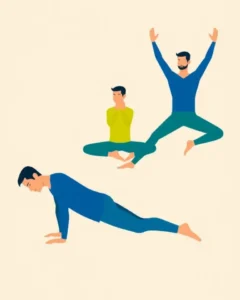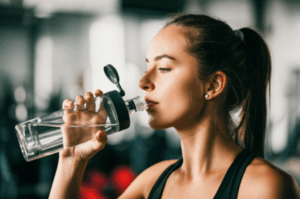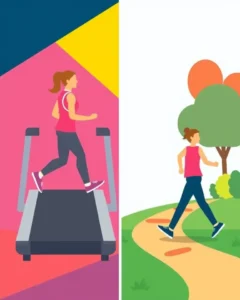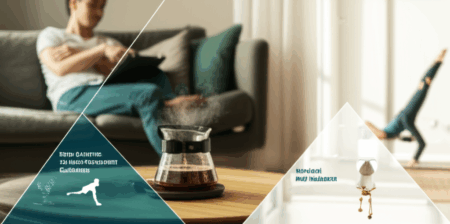Extreme heat isn’t just uncomfortable; it can significantly impact both your mental well-being and your physical fitness. Doctors and research are increasingly highlighting the intricate connections between high temperatures and our cognitive and emotional states. This article explores these effects and provides practical strategies to stay safe and healthy during heat waves.
The Burning Effects of Heat on Mental Health
When temperatures soar, the impact extends beyond physical discomfort. Extreme heat can affect your mental health in several ways:
- Mood Changes: You might experience increased irritability, anxiety, or feelings of depression. Some individuals may also have mood swings or feel more aggressive. Experts believe that higher temperatures can cause people to feel angrier and more frustrated. Conversely, cooler temperatures tend to make people feel more content.
- Difficulty Concentrating: Heat can make it harder to focus and think clearly, making it difficult to complete tasks that are usually not a problem.
- Sleep Disruption: High temperatures, especially at night, can disrupt sleep. Lack of sleep can lead to feeling tired and grumpy and can worsen mental health conditions like anxiety and depression. Once it’s over 70 degrees Fahrenheit at night, people tend to have lower sleep quality.
- Increased Stress and Overwhelm: Feeling unusually stressed or overwhelmed could be due to the heat, especially if you’re worried about the heat itself or if it’s making other problems in your life feel worse.
- Physical Symptoms: Heat can cause physical symptoms that affect your mental health, such as headaches, dizziness, or nausea. These physical symptoms can make you feel anxious or down.
- Behavioral Changes: You might find yourself acting differently when it’s hot. For example, you might be more impulsive or have a hard time controlling your anger.
- Exacerbation of Existing Mental Health Conditions: If you already have a mental health condition like depression, anxiety, bipolar disorder, or schizophrenia, you might notice that your symptoms worsen when it’s hot.
- Increased Risk of Suicide: Studies have found that suicide rates tend to increase when the temperature goes up, especially among men and older adults. One study even predicted that if nothing is done about climate change, there could be thousands more suicides in the US and Mexico by the year 2050.
- Medication Ineffectiveness: Some medications for mental health problems may not work as well or may have more side effects during hot weather.
Who is Most Vulnerable?
While high heat can affect anyone’s mood, certain groups are at higher risk for mental health symptoms associated with heat:
- People with chronic illnesses.
- Those with dementia.
- Individuals facing financial challenges that limit access to air conditioning or quality medical care.
- People with pre-existing mental health conditions, especially those taking antidepressants and antipsychotics, which may affect how the body regulates temperature.
- Pregnant women.
- Individuals with substance abuse problems.
The Science Behind the Heat
Extreme heat can disrupt hormones, sleep, and social norms, leading to:
- Hormonal Imbalance: When you aren’t sleeping well, your hormones can get thrown off balance, and cortisol (the stress hormone) increases.
- Serotonin Levels: Higher temperatures may affect serotonin, a neurotransmitter that regulates mood, especially among people already living with depression and those who drink alcohol regularly.
- Cognitive Function: Hot weather can make it hard to sleep, especially without air conditioning. Not getting enough sleep changes the areas of your brain associated with decision-making and problem-solving.
Taking Action: Protecting Your Mental Health
When the temperature starts to rise, there are several ways to protect your mental health:
- Stay Hydrated: Dehydration can worsen stress, anxiety, and irritability. Drink plenty of water throughout the day.
- Stay Cool: Spend time indoors or in the shade during the hottest parts of the day. Use fans or air conditioning, take cool showers, or use cold packs to help cool down.
- Make Healthy Choices: Physical health supports mental health, so eat balanced meals, exercise, and get enough sleep.
- Manage Stress: Use meditation, yoga, and other techniques to reduce stress levels.
- Socialize: Being around other people can boost mental health.
- Follow Your Treatment Plan: If you have a mental health condition and are under the care of a healthcare provider, continue to follow your treatment plan. Contact your healthcare provider if your symptoms worsen.
- Manage Medications: If you take medications, consult with your provider before combining your dose with excessive heat, as some medications might not be suitable for high temperatures.
- Check-in: Regularly reach out to vulnerable family members, neighbors, or friends, offering support and assistance as needed.
Fitness in the Furnace: Exercising Safely in the Heat
Exercising in warm weather can be a great way to enjoy the outdoors and stay active. However, it’s crucial to take precautions to avoid heat-related illnesses.
The Dangers of Exercising in the Heat
When you exercise, your body generates heat. In hot weather, your body has to work harder to cool down, which can lead to:
- Dehydration: You lose fluids through sweat, which can lead to dehydration if you don’t replace them.
- Heat Exhaustion: This occurs when your body can’t cool itself effectively and is marked by symptoms like headache, dizziness, nausea, and muscle weakness.
- Heat Stroke: A severe condition where your body can no longer control its temperature, with symptoms including confusion, seizures, or loss of consciousness. It can impact the entire body, including the heart and lungs.
- Reduced Performance: Research has widely established the negative effects of heat on exercise performance. Performance will always suffer proportionally to an increase in temperature.
- Increased Risk of Rhabdomyolysis: Heat also increases your risk for a rare condition called rhabdomyolysis, which causes the rapid breakdown of muscles.
- Cardiovascular Strain: The cardiovascular system faces a challenge due to the enhanced thermoregulatory demand for skin blood flow coupled with dehydration and hyperthermia.
Safety First: Tips for Exercising in the Heat
- Check the Heat Index: The heat index factors in humidity and provides a sense of how hot it really feels and what’s dangerous for prolonged exposure or strenuous activity. Exercise caution when the heat index reaches 80 to 90 degrees, and extreme caution from 90 to 103 degrees. Everything over 103 is labeled as “danger” or “extreme danger.”
- Hydrate Adequately: Drink plenty of water before, during, and after exercise. Aim for 16 to 20 ounces of fluid in the two hours leading up to your session, and continue sipping throughout your workout. For longer sessions, consider sports drinks to replenish electrolytes.
- Choose the Right Time: Exercise in the early morning or late evening when temperatures are cooler. Avoid working out between 10 a.m. and 3 p.m., when the sun is at its peak.
- Dress Appropriately: Wear lightweight, loose-fitting, and light-colored clothing to allow for better air circulation and evaporation of sweat.
- Protect Your Skin: Use sunscreen with an SPF of 30 or higher and wear a hat and sunglasses.
- Acclimate to the Heat: Gradually acclimate your body to exercising in the heat by slowly increasing the intensity and duration of your outdoor activities over a period of weeks.
- Modify Your Workout: Reduce the intensity and duration of your workouts in extreme heat. Take breaks as needed and don’t be afraid to lower the exercise intensity.
- Listen to Your Body: Pay attention to how your body feels and don’t push yourself too hard. If you experience lightheadedness, hot or red skin, blurry vision, extreme fatigue, weakness, an excessive heart rate, or vomiting, rest in the shade and rehydrate.
- Find a Shaded Area: Choose shaded routes for running, walking, or cycling. If you need a break, find a shaded area to rest and cool down.
- Avoid Heavy Meals: Eat light, easily digestible meals that provide energy without weighing you down.
- Know When to Stop: It’s not wise to start anything new or out of the ordinary during a heat wave. Training that you’re not used to means your body puts out warning signs you might not recognize.
Recognizing Heat-Related Illnesses
Knowing the symptoms of heat exhaustion and heat stroke is crucial.
Heat Exhaustion:
- Headache
- Dizziness and confusion
- Loss of appetite and feeling sick
- Excessive sweating and pale, clammy skin
- Cramps in the arms, legs, and stomach
- Fast breathing or a fast pulse
- High temperature
- Extreme thirst
- Weakness
- Anxiety
Heat Stroke:
- Confusion
- Slurred speech
- Unconsciousness
- Seizures
- Heavy sweating or hot, dry skin
- Very high body temperature
- Rapid heart rate
- Headache, dizziness, nausea, vomiting
What to do:
Heat Exhaustion:
- Stop what you are doing, go to a cool, shaded place, and lie down with legs supported and slightly lifted.
- Slowly sip plenty of water or fruit juice, avoiding caffeine and alcohol.
- Cool down with a fan or an air conditioner, cool water sprayed on the skin, or by having a cool shower or bath.
- Reduce body temperature by placing cool packs under the armpits, groin, or neck.
- Use massage to ease spasms or cramps, then use ice packs.
Heat Stroke:
- Call 911 immediately.
- Move the person to a cooler place.
- Cool the person down with cold water or cold compresses.
Conclusion
Extreme heat poses significant risks to both mental health and physical fitness. By understanding these risks and taking appropriate precautions, you can stay safe and maintain your well-being during hot weather. Remember to stay hydrated, stay cool, listen to your body, and seek medical attention if needed.







